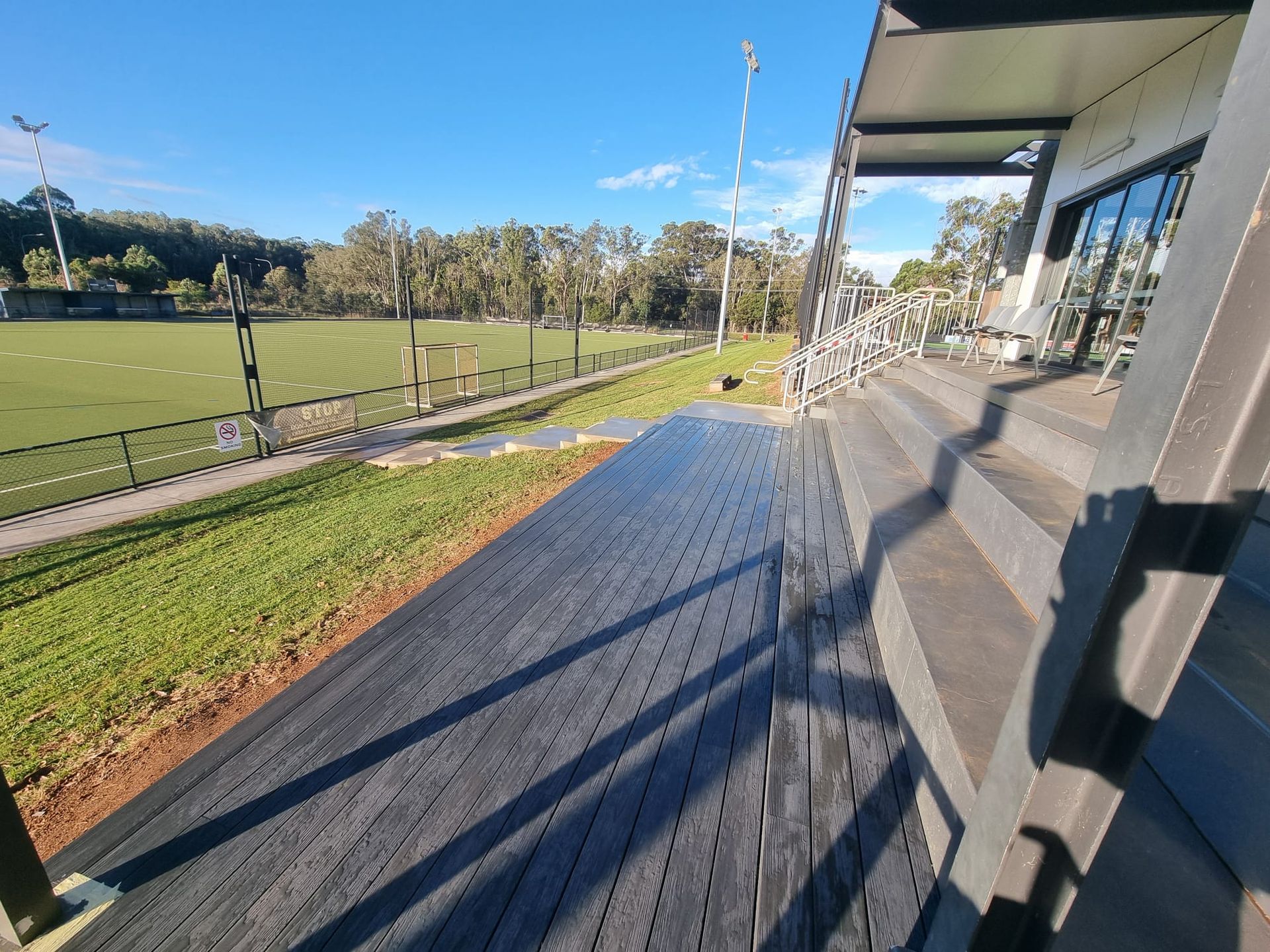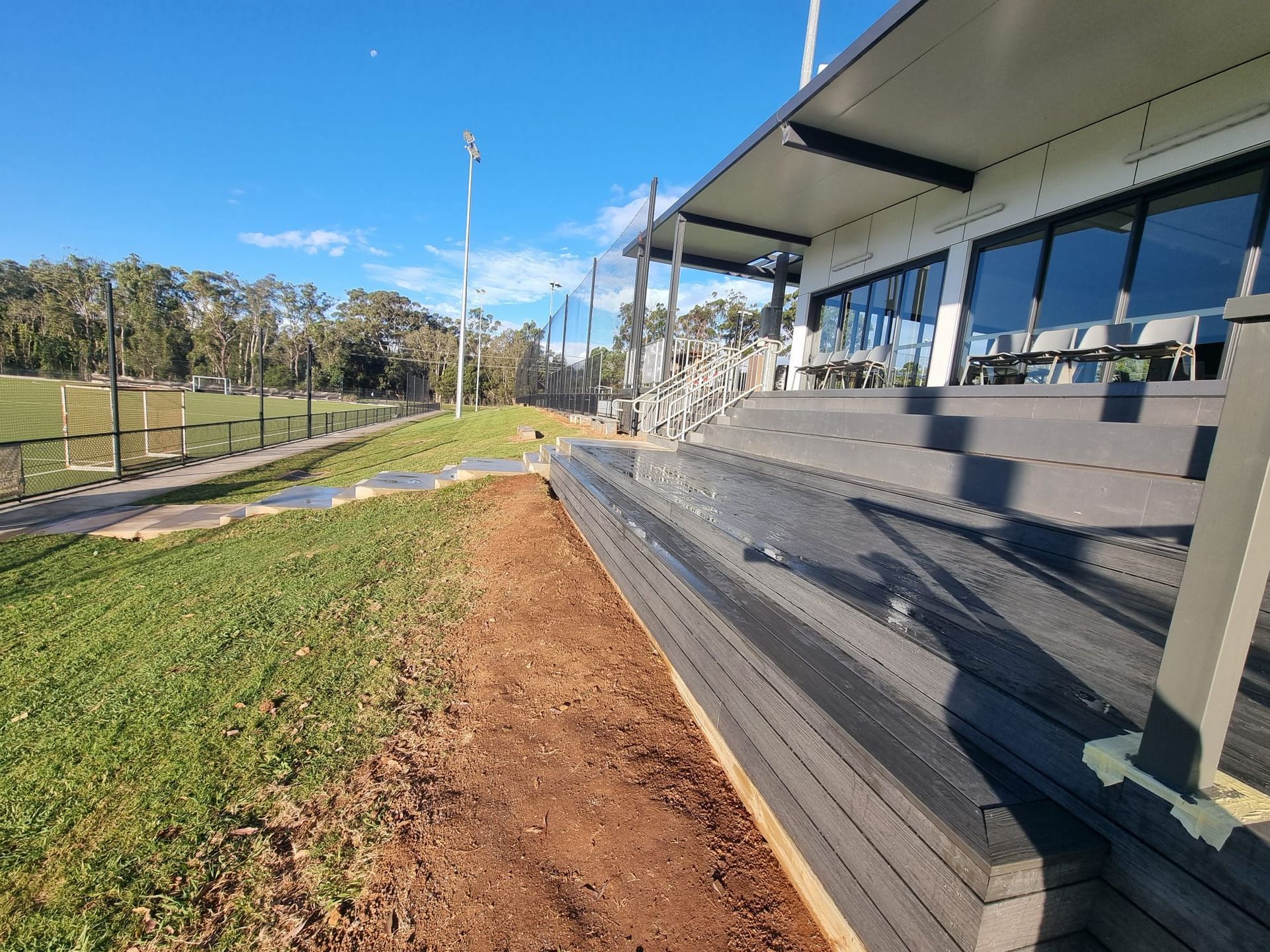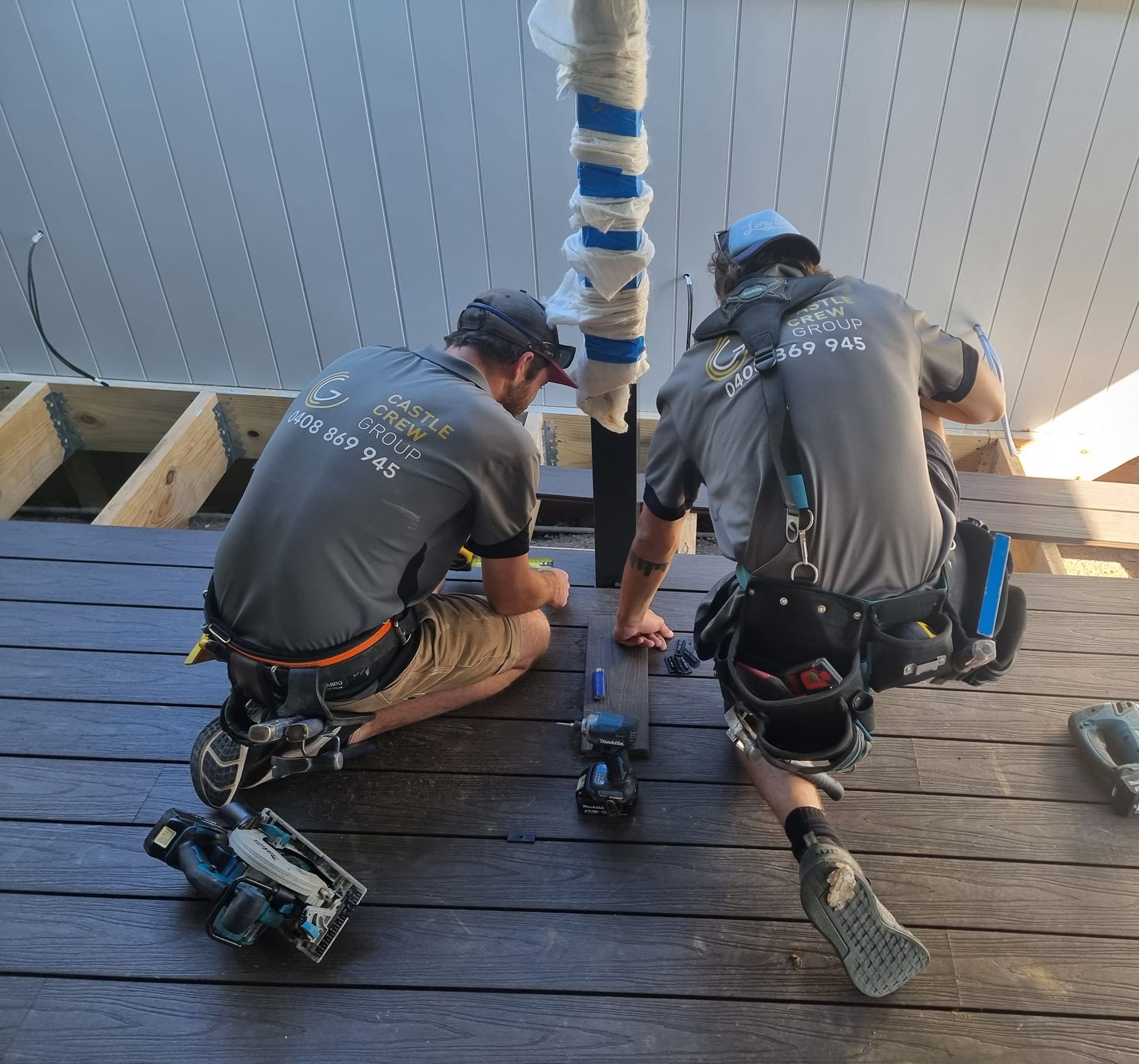What is Composite Decking: Weighing the Pros and Cons
Outdoor decks are the perfect space for relaxation and socialising at home. Traditionally, timber has been the go-to material for decking. However recent reports about hardwood timber shortage and longer delivery lead times suggest that using timber for construction may not be as sustainable as some might think.
This is why composite decking has quickly gained popularity and has become one of the best modern alternatives to traditional wood decking as it perfectly mimics the look of wood while providing superior durability and weather resistance.
Whether you are building a brand new deck or breathing new life into your existing deck, composite decking is a smart, sustainable and stylish solution worth exploring. Before making a decision, read on to discover what is composite decking, the pros and cons, and why it could be the ideal choice for your home.

What is Composite Decking?
As technology advances, it has opened the doors for composite decking to become a modern alternative to classic wood decks. But what is a composite deck?
Composite decking is a modern building material used for creating outdoor decks which is characterised by its blend of durability and visual appeal. Unlike traditional wood decks, it is engineered to withstand various environmental conditions and reduce issues like warping, splintering and rotting.
This innovative material is designed to offer the look and feel of natural wood while providing enhanced longevity and minimal maintenance requirements. It typically comes in a range of colours and finishes which allows homeowners and builders to achieve the desired style for their outdoor spaces.
What is Composite Decking Made Of?
Composite decking is a man-made decking material which offers superior durability and low maintenance. It combines several components of wood, recycled plastics and bonding agents to achieve its robust and resilient characteristics. Wood particles can be anything from saw dust, woodchips, wood particles and the plastic components can be either virgin or recycled plastic materials. This mixture is then heated together, with different colourings, formed and shaped into board lengths and then cooled. This results in a customisable appearance that needs far less maintenance compared to timber decking.

What is a Composite Deck’s Advantages and Disadvantages
Composite decking has become a popular choice for homeowners and builders due to its blend of style and practical benefits. However, like any building material, it comes with its own set of pros and cons.
Exploring its advantages and disadvantages can help you make an informed decision about whether composite decking is the right choice for your outdoor space.
Advantages of Composite Decking:
Ease of Installation
Composite decking is designed for straightforward installation which often includes interlocking systems and hidden fasteners that simplify the process.
Safety
This decking option is a safer choice for families. The surface is often designed to be non-slip, which reduces the risk of accidents even when the deck is wet.
Highly Durable
Composite decking is resistant to wear and tear. It is the best option that will stand up well against heavy foot traffic, harsh weather conditions and does not require the yearly maintenance that hardwood requires.
Doesn't Splinter
Unlike traditional wood, composite decking doesn’t splinter due to its plastic nature.
Moisture Resistant
Composite decking is moisture-resistant, which helps prevent mould formation, rot and warping.
Appearance
This decking material comes in a variety of styles and colours which allows homeowners to choose the look that best matches their taste and space. The timber grain moulding provides a fantastic replica to the timber grains.
Eco-friendly
Made from recycled materials, composite decking is an environmentally friendly option that helps reduce waste and promotes sustainability by reducing the demand for wood.
Designed for Aussie Weather Conditions
Composite decking is specifically designed for Australia's diverse climate. It can handle the intense sun, heavy rain and everything in between without deteriorating.
Low Maintenance
Unlike wood, which needs regular sealing, staining and sanding, composite decking just needs an occasional wash to keep it clean and looking good.
More Cost-Effective in the Long Run
While the upfront cost of composite decking can be higher than that of wood, it’s more cost-effective over time. Composite decking won’t need regular, costly maintenance like re-sealing, oiling or resurfacing - unlike traditional wooden decks.
Disadvantages of Composite Decking:
More Expensive Compared to Timber
The initial cost of composite decking is typically higher than that of traditional timber. This can be a downside if you’re working with a tight budget.
Limited Colour Options
Unlike wood, composite decking is manufactured and has a standard colour range. It will not have the natural wood knots and grain variations that come with natural timber, hence won’t lend itself to any character building of the space. It also can’t be sanded or stained. If you ever want to change the colour or look of your deck, your options are limited compared to the flexibility wood offers.

Composite Decking with CastleCrew!
At CastleCrew Group, we’re passionate about helping homeowners create beautiful, functional outdoor spaces. With our expertise in composite deck building for Port Macquarie properties and Mid North Coast, we understand this fantastic material inside and out and ensure that our installations exceed your expectations.
We are your leading Port Macquarie builder, specialising in a range of projects, such as custom builds, renovations, wall removal, home extensions, and more! Don’t hesitate to contact us for your home building projects!
CastleCrew Group | Proudly Powered by DSD
Privacy Policy | Terms of Service





